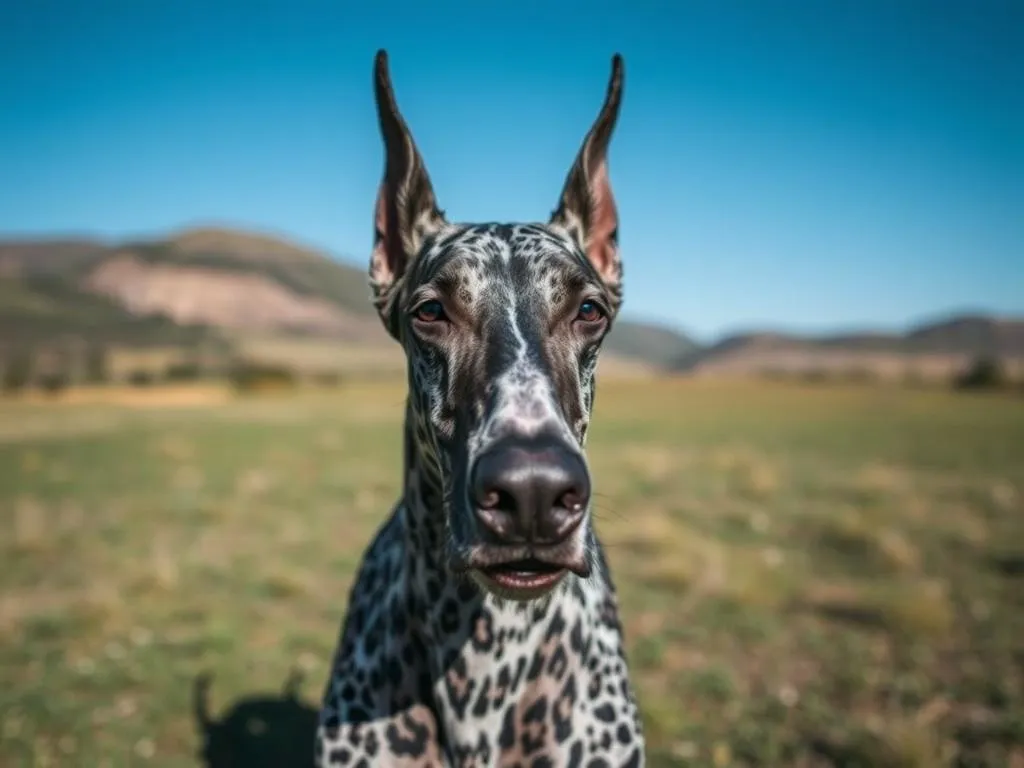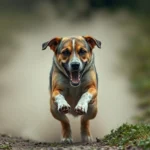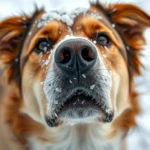
Introduction
Great Danes are one of the most impressive dog breeds, often referred to as the “gentle giants” of the canine world. With their towering stature, these dogs can weigh between 100 to 175 pounds and stand as tall as 30 inches at the shoulder, showcasing a blend of elegance and strength. Known for their friendly disposition, Great Danes are affectionate companions, making them excellent family pets. However, their size also predisposes them to certain health issues that require diligent care, particularly when it comes to their exercise needs.
The importance of exercise in a Great Dane’s health cannot be overstated. Regular physical activity helps maintain a healthy weight, supports joint health, and contributes to their overall well-being. In this article, we delve into the specifics of how much exercise Great Danes need to thrive, while also addressing their unique health considerations.
Understanding Great Danes
Breed Characteristics
Great Danes possess a regal look, characterized by their long legs and muscular build. Adult males typically weigh between 140 to 175 pounds, while females range from 100 to 140 pounds. Their height can vary dramatically, with some individuals reaching up to 36 inches tall. Aside from their size, Great Danes are known for their affectionate nature and loyalty. They are gentle, friendly, and great with children, often forming strong bonds with their families.
Common Health Issues
Despite their majestic appearance, Great Danes are susceptible to a range of health issues, which can be exacerbated by inadequate exercise.
- Hip Dysplasia: A common genetic condition where the hip joint does not fit into the hip socket properly, leading to arthritis and pain.
- Bloat (Gastric Torsion): A life-threatening condition where the stomach fills with gas and twists. This can occur more frequently in deep-chested breeds like Great Danes.
- Heart Problems: Conditions such as dilated cardiomyopathy can affect their heart health, leading to serious complications.
Lifespan and Aging
The average lifespan of a Great Dane is around 7 to 10 years, which is relatively short compared to smaller breeds. As they age, they can develop additional health issues, including arthritis and cognitive dysfunction syndrome. Thus, tailoring their exercise routine becomes crucial to their longevity and quality of life.
The Importance of Exercise
Benefits of Regular Exercise
Regular exercise provides numerous benefits for Great Danes, which include:
- Weight Management: Maintaining a healthy weight is critical, especially for large breeds, to prevent joint problems and other health issues.
- Mental Stimulation: Exercise can help alleviate boredom, which is essential for a breed known for its intelligence and energy.
- Prevention of Health Issues: Engaging in physical activities can prevent obesity, reduce the risk of heart disease, and minimize the likelihood of developing joint problems.
Risks of Inadequate Exercise
On the flip side, a lack of exercise can lead to several risks:
- Obesity: Given their size, Great Danes are at a higher risk of obesity, which can exacerbate existing health issues.
- Behavioral Problems: Insufficient physical activity can lead to boredom, resulting in destructive behaviors such as chewing or excessive barking.
- Muscle and Joint Issues: Without regular movement, muscles weaken and joints can become stiff, leading to discomfort and pain.
How Much Exercise Do Great Danes Need?
General Exercise Requirements
Great Danes require a considerable amount of exercise to maintain their health. On average, they need about 1 to 2 hours of exercise each day. This duration can be split into several sessions throughout the day, making it manageable for both the dog and the owner.
- Age-Specific Exercise Needs:
- Puppies: While young, Great Danes should engage in shorter, more frequent play sessions to prevent overexertion, as their bodies are still developing.
- Adults: Adult Great Danes require more rigorous activity, including walks, runs, and playtime.
- Seniors: Older Danes may need a reduction in intensity but still require regular light exercises to keep them mobile.
Types of Exercises Suitable for Great Danes
Great Danes thrive on various forms of exercise, which can include but are not limited to:
- Walking and Jogging: Daily walks are essential and can be complemented with light jogging or brisk walks to increase cardiovascular health.
- Swimming: Great Danes often enjoy swimming, which provides a low-impact workout that is easy on their joints.
- Fetch and Other Interactive Games: Engaging in games like fetch not only provides exercise but also mental stimulation.
Monitoring Exercise Intensity
It’s crucial to monitor the intensity of your Great Dane’s exercise routine.
- Signs of Overexertion: Watch for excessive panting, drooling, or lethargy, which may indicate that they need a break.
- Adjusting Exercise Based on Weather and Health Conditions: Be mindful of the weather; extreme heat or cold can affect their ability to exercise safely. Adjust their routine accordingly if they have health issues.
Creating a Balanced Exercise Routine
Daily Exercise Schedule
Establishing a daily exercise schedule can help ensure that your Great Dane receives the activity they need.
- Morning and Evening Routines: A combination of walks in the morning and evening can help maintain their fitness levels.
- Incorporating Playtime: Include play sessions in your routine to keep them mentally engaged.
Socialization and Group Activities
Socialization is essential for Great Danes to develop good behavior and confidence around other dogs.
- Importance of Socialization with Other Dogs: Regular interactions with other dogs can help them learn proper social cues and reduce anxiety.
- Dog Parks and Playdates: Frequenting dog parks or arranging playdates can provide opportunities for socialization and exercise.
Adapting the Routine as They Age
As your Great Dane ages, their exercise needs will change.
- Adjustments for Senior Great Danes: Older dogs may require shorter, more frequent walks rather than long sessions.
- Low-Impact Exercises for Older Dogs: Activities such as gentle swimming or short strolls can help keep them active without straining their bodies.
Nutrition and Hydration
Importance of Diet in Relation to Exercise
Proper nutrition is vital for maintaining the health and energy levels of Great Danes.
- Nutritional Needs of Great Danes: Ensure that their diet is rich in quality protein, healthy fats, and essential vitamins and minerals to support their size and activity level.
- Impact of Diet on Energy Levels and Exercise Performance: A well-balanced diet helps them perform optimally during exercise, aiding in muscle recovery and overall health.
Importance of Hydration
Hydration is equally crucial, especially during exercise.
- Keeping Great Danes Hydrated During Exercise: Always provide fresh water before, during, and after exercise sessions to prevent dehydration.
- Signs of Dehydration: Monitor for symptoms like excessive panting, dry gums, or lethargy, which indicate that your dog may be dehydrated.
Recognizing Signs of Health Issues
Common Signs of Overexertion
Being vigilant about your Great Dane’s health during exercise can prevent serious issues.
- Panting and Excessive Drooling: These can be early signs of overheating or overexertion.
- Lethargy and Unwillingness to Exercise: If your dog shows reluctance to engage in physical activity, it may indicate discomfort or health problems.
When to Consult a Veterinarian
Knowing when to seek professional help is vital.
- Persistent Signs of Discomfort: If your Great Dane continues to show signs of distress, it’s essential to consult a veterinarian.
- Changes in Behavior Related to Exercise: Sudden changes in behavior or exercise habits should be evaluated by a professional.
Conclusion
In summary, understanding how much exercise Great Danes need is crucial for their overall health and well-being. Regular, balanced exercise not only helps maintain a healthy weight but also supports their mental health and prevents a myriad of health issues. As a Great Dane owner, developing a personalized exercise plan that takes into account their age, health, and preferences is vital for a happy and healthy life. Maintaining your Great Dane’s health through proper exercise, nutrition, and regular veterinary check-ups will ensure they live a long and fulfilling life by your side.









